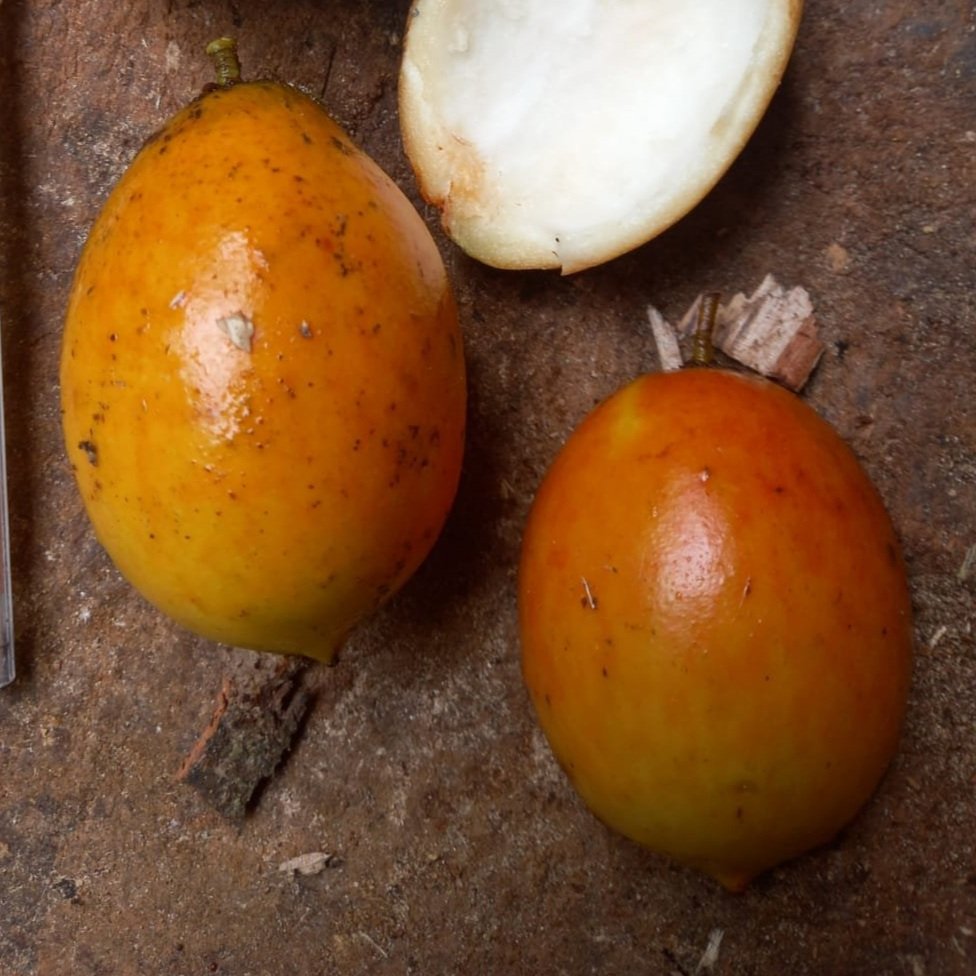Garcinia Pulvinata
Seeds were imported from Jim West in Ecuador. This dioecious species of Garcinia is native to the northern regions of South America, where it thrives and produces distinctive fruit. The fruits of this tree typically measure around 8 cm in length and 4 cm in width, making them a noticeable presence on the tree. Known for their generous amount of sweet, flavorful pulp, these fruits are highly prized in their native habitats. The pulp is abundant and offers a pleasant taste that sets this Garcinia apart from others. As a dioecious plant, male and female trees must grow in proximity for successful fruiting, making it a fascinating species in terms of both reproduction and fruit production. Seeds are shipped in humid vermiculite.
Seeds were imported from Jim West in Ecuador. This dioecious species of Garcinia is native to the northern regions of South America, where it thrives and produces distinctive fruit. The fruits of this tree typically measure around 8 cm in length and 4 cm in width, making them a noticeable presence on the tree. Known for their generous amount of sweet, flavorful pulp, these fruits are highly prized in their native habitats. The pulp is abundant and offers a pleasant taste that sets this Garcinia apart from others. As a dioecious plant, male and female trees must grow in proximity for successful fruiting, making it a fascinating species in terms of both reproduction and fruit production. Seeds are shipped in humid vermiculite.
Seeds were imported from Jim West in Ecuador. This dioecious species of Garcinia is native to the northern regions of South America, where it thrives and produces distinctive fruit. The fruits of this tree typically measure around 8 cm in length and 4 cm in width, making them a noticeable presence on the tree. Known for their generous amount of sweet, flavorful pulp, these fruits are highly prized in their native habitats. The pulp is abundant and offers a pleasant taste that sets this Garcinia apart from others. As a dioecious plant, male and female trees must grow in proximity for successful fruiting, making it a fascinating species in terms of both reproduction and fruit production. Seeds are shipped in humid vermiculite.



